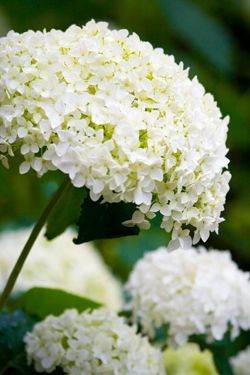Hydrangea Care & Maintenance
Hydrangea plants usually enjoy a sunny morning and a shady afternoon, but some do well in part shade locations too.
 Hydrangea plants usually enjoy a sunny morning and a shady afternoon, but some do well in part shade locations too. When purchasing your hydrangea, always ask what the best variety is for your particular need.
Hydrangea plants usually enjoy a sunny morning and a shady afternoon, but some do well in part shade locations too. When purchasing your hydrangea, always ask what the best variety is for your particular need.
- Keep your hydrangeas hydrated the first two years after being planted. Don’t over-do it.
- Depending on your planting zone, don’t prune until AFTER blooming.
- It depends on the variety when you prune. Keep in mind that if you prune before the bloom in the fall, you may not have blossoms the following spring.
- Have an older hydrangea? If you do, remove dead stems in the spring.
- For example: oakleaf, panicle and smooth hydrangeas blossom on the current seasons’ wood so they should be pruned BEFORE bloom when the plant is dormant.
- In the fall, cover plants to a depth of at least 18 inches with bark mulch, leaves, pine needles or straw. Cover the entire plant if possible.
- Deer enjoy nibbling on hydrangea so if you have a larger deer population, you may want to reconsider planting hydrangea.
- Other pests that may cause angst to your hydrangea include gray mold, slugs, powdery mildew, rust. Consult with your local nursery on the best treatment for your particular plant.


